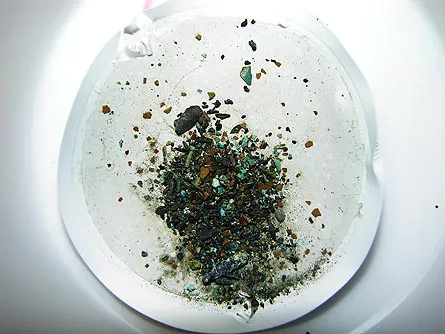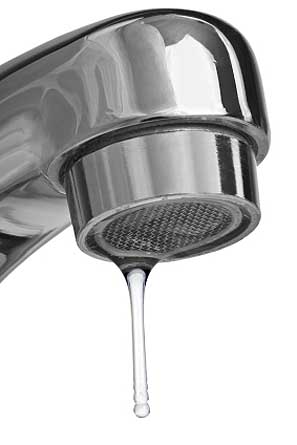From Aerators to Rust — New Lead Risks
Aerators cap the ends of most drinking-water faucets. In some cases, they’re used to conserve water by reducing a faucet’s maximum flow rate; in others their primary function is to concentrate the flow of water so that it delivers more pressure and cleaning power. But these little metal cages also collect debris. Including lead. And unless you’re regularly cleaning out those aerators, you might be developing a toxic mini gravel field through which your drinking water must pass before reaching your glass or coffee pot.
Indeed, one lead poisoning case in North Carolina involved a child who didn’t drink the tap water (his mom wouldn’t let him, after learning of his elevated lead status). This little guy accumulated increasing quantities of lead largely from pasta — a favorite food. It was boiled in water that had passed through a faucet aerator loaded with tiny chunks of the heavy metal, explains Marc Edwards.
I was among a handful of reporters who were introduced to some new elements of lead toxicity in home drinking water, last month, while attending the Society of Environmental Journalists annual meeting. Seven of us got a briefing from Edwards at his Virginia Tech lab in Blacksburg. It was there I heard of the pasta anecdote.
The following week, I phoned Edwards for clarification on the pasta connection. As he explained it, lead solder in some home plumbing was getting old and bits would fall off and flow with the water toward the tap. It collected in the faucets’ aerators. The boy’s mom hadn’t been regularly cleaning out those mesh traps. (Then again, why would she? I suspect most of us don’t do so unless a faucet’s flow seems impeded.)
To make pasta, you boil a small quantity of noodles in a huge volume of water. In the North Carolina child’s home, water flowed through a grit-laden aerator and picked up substantial amounts of lead. As the pasta boiled, the waterborne metal “kind of stuck to the noodles,” Edwards says. His calculations now indicate that for this little boy, “it was essentially like eating a dime-size lead-paint chip with every serving of pasta.”
It’s a problem that could plague any home with plumbing that contains old, lead-soldered joints. For years, tests might show the water largely leadfree. Then, for reasons no one quite understands, a joint could start losing its solder. Thegritty bits will collect in a faucet aerator and could persist for months or more.
Another unexpected source of lead: rusty-looking tap water.
In our neighborhood, this occurs when there’s been a water shutoff in the mains, and then a flushing of the system. Our local utility always says the water, although grody looking, is safe to drink. However, because it’ll stain your laundry and is distinctly unappetizing, water providers generally recommend that homeowners open their taps and allow the water to continue running until it’s crystal clear again.
In fact, rusty water may not be safe to drink, according to new (and yet-unpublished) work by the Virginia Tech team. The iron that imparts the rusty color to water “acts like metal magnet or sponge,” Edwards told me. It concentrates the metals together.
Where soluble lead is present, it will glom onto the rust particles in water, he says. But that’s not the only potentially toxic risk rusty water can pose. For instance, Edwards notes, in drinking water that’s naturally rich in arsenic, although not at toxic concentrations, “We’ve shown that you can get potentially lethal amounts of arsenic” from drinking the water — if it’s loaded with iron oxide (rust) particles.
I bet you can guess what I’m doing tonight: using toothpicks to dig the grit from the inside of my faucets’ aerators. And all this time, I thought those rocky deposits were just minerals left behind by our exceptionally hard water.








